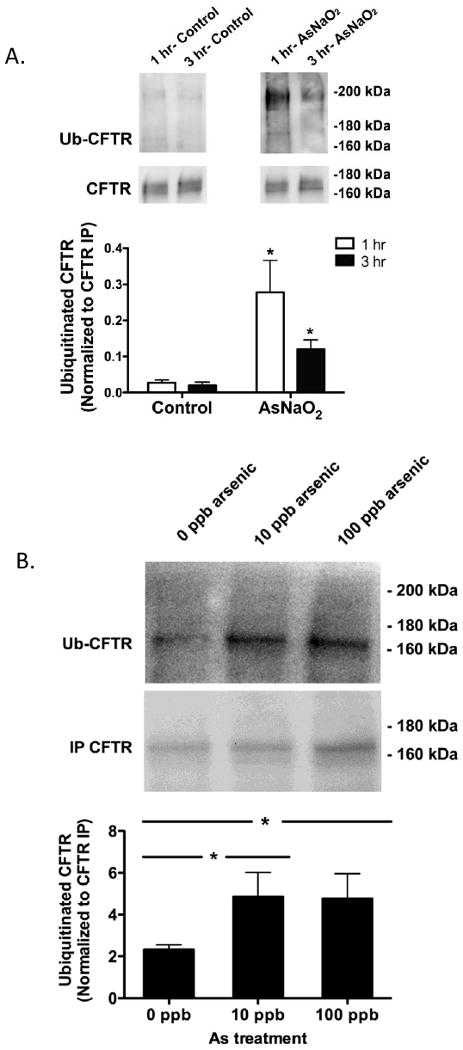Figure 6.

Arsenic increased the amount of ubiquitinated CFTR in the gill of fish transferred from freshwater (FW) to seawater (SW). A) Fish were adapted to freshwater (FW) for two weeks, then exposed to arsenic (12,000 ppb) or vehicle for 48 hours and then placed in seawater (SW) containing arsenic (12,000 ppb) or vehicle for 1 hr or 3 hrs. At the indicated times, gills were isolated and the amount of ubiquitinated CFTR in control (black bars) and arsenic treated fish (white bars) were measured as described in methods. B) Fish were adapted to freshwater (FW) for two weeks, then exposed to arsenic (10 or 100 ppb) or vehicle for 48 hours and then placed in seawater (SW) containing arsenic (10 or 100 ppb) or vehicle for 1 hr. After 1 hr, gills were isolated and the amount of ubiquitinated CFTR in control and arsenic treated fish were measured as described in methods. Data were normalized for total immunoprecipitated CFTR (i.e., Ub-CFTR/total immunoprecipitated CFTR) to account for any possible difference in total CFTR abundance and immunoprecipitation efficiency among tissues. n=5/group. *P<0.05 versus control (0 ppb arsenic).
